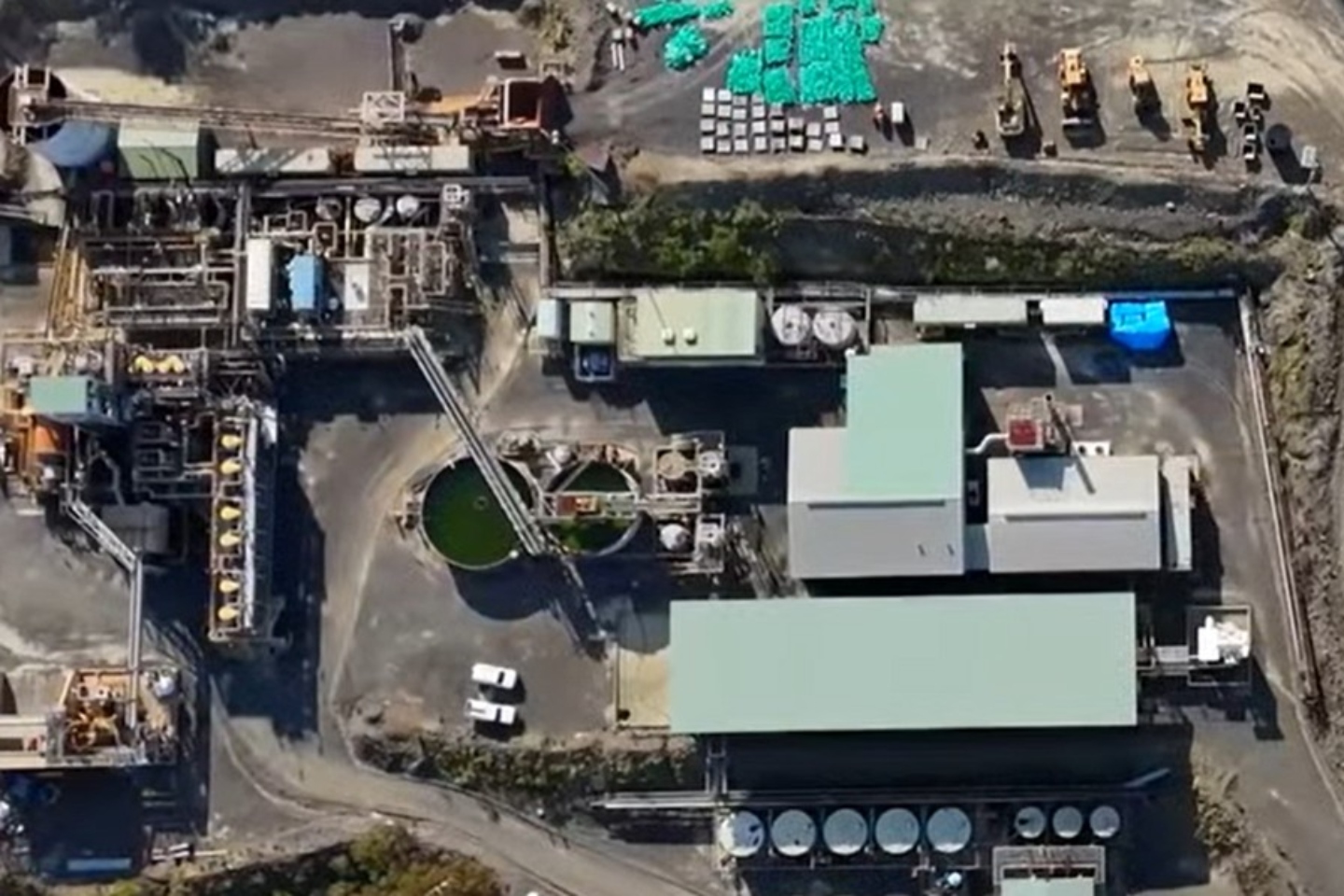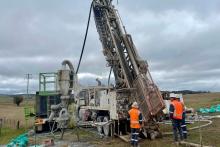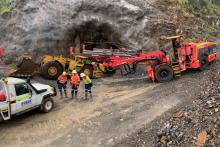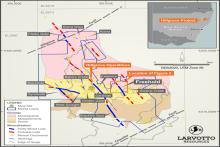Larvotto's IP survey at Hillgrove's Freehold prospect, in NSW, has confirmed historic antimony-gold associations and uncovered untested extensions 350m east of historic mining. The company has already launched exploratory drilling on the new targets. Additionally, a $388,662 R&D tax rebate recognises the company's metallurgical innovations for gold and antimony recovery from ore and legacy tailings, which could boost output while bringing environmental benefits.


Larvotto Resources has started drilling new targets identified by an induced polarisation (IP) survey at its Freehold prospect, within its Hillgrove project in NSW, which uncovered untested extensions 350 metres east of historic mining.
The promising survey results indicate strong associations with historically mined areas and have uncovered new extensions that could imply new priority drill targets amid soaring antimony and gold prices.
In rolling hills 23 kilometres east of Armidale, Larvotto’s Hillgrove antimony-gold project has long been a cornerstone of the state’s mining legacy.
Mining in the area kicked off in 1857 with alluvial gold finds in nearby Bakers Creek, immediately west of the current mine infrastructure. However, the discovery of antimony in the late 1870s put the area on the map.
The Freehold prospect, just 1.2km east of the main Hillgrove mine site, became a hub of activity under New England Antimony Mines (NEAM) from 1974 to 2002.
NEAM developed its project into a serious operation, sinking a 330m-deep vertical shaft with eight levels and extracting stibnite-gold lodes through adits and small open cuts.
The output helped cement Hillgrove as NSW's top antimony producer, contributing to more than 750,000 ounces of gold and 40,000 tonnes of antimony historically produced across the district.
But when prices crashed in 2002, operations shut down, leaving behind underexplored potential in the Girrakool metasediments - similar to nearby hotspots such as at Eleanora-Garibaldi and Metz.
Jumping forward, Larvotto Resources picked up the 254 square kilometre project in December 2023 for a bargain $8 million and is now breathing new life into it.
With antimony prices nearly doubling in the past year and gold hitting record highs, the timing couldn't be better. The company is sitting on Australia's biggest antimony resource, ranked eighth globally and is ramping up exploration to feed into its planned production restart in 2026.
Larvotto’s latest IP survey at the Freehold prospect is a prime example of its smart, low-cost approach.
Having engaged consultants Fender Geophysics, the company undertook a gradient-array IP and resistivity survey over a 16.5-hectare area, using 396 electrode locations along six 650m lines spaced 50m apart.
The setup was tweaked with 20m electrode separations and dual readings at 40m and 60m to probe deeper and refine future surveys.
The testwork builds on a similar April 2025 program at Clarks Gully, 4.5km north of the mine infrastructure, where mineralisation in the Hillgrove monzogranite showed distinct chargeable and resistive signatures.
At the Freehold prospect, which is hosted in metasediments, part of the program’s objective was to test if host rocks influence the geophysical signatures and, if possible, to map extensions of the sulphide-rich, silica-altered structures often associated with mineralisation.
In a resounding proof-of-concept, the results show a strong correlation with the historic Freehold workings, where occasionally sporadic and limited past mining has left plenty of upside.
Standout anomalies include a large resistivity high 350m east of the old mine workings that has never been drilled, and a smaller one southwest of the old mine. Both anomalies are parallel with the trend of historic surface workings along strike.
The resistivity highs almost certainly point to likely silicification, which has proven to be a reliable hallmark of antimony-gold zones across Hillgrove.
Chargeability also picked up the sulphide side of the mineralisation, showing the IP/resistivity index can be a low-cost tool for pinpointing targets.
With new targets in its sights, Larvotto promptly launched exploratory drilling at Freehold to test the geophysical responses in the context of the historic mining and exploration data in a bid to expand the prospect's potential in the current high-price environment.
Larvotto Resources managing director Ron Heeks said: “The Freehold survey highlights the potential of geophysics to target unknown and underexplored mineralisation at Hillgrove. The excellent correlation between the resistivity highs along strike of known and partially mined mineralisation at Freehold is clear. This area has historic workings but has only ever seen a few drill holes put into it.”
With more than 200 old mines dotting the Hillgrove mineral field and an estimated exploration target of 670,000 to 1.08 million ounces of gold equivalent at 7.4-9.46 grams per tonne, the new, relatively simple and inexpensive geophysics could be a path to possible district-scale potential for the greater project area.
Larvotto plans to expand the gradient-array surveys over other priority areas, such as Metz, possibly adding dipole-dipole IP for 3D modelling to gauge depths to targets, before following up with more drilling on new anomalies.
Additionally, Larvotto revealed yesterday that it had received a $388,662 R&D Tax Incentive rebate from the government for last year. The useful cash infusion recognises the company’s metallurgical R&D at Hillgrove, which focused on developing practicable recovery pathways for gold and antimony from in-situ ore and legacy tailings in its TSF1 facility.
Testwork shows tailings retreatment to be technically viable and would potentially boost metal output and enhance environmental rehabilitation by reducing the footprints of historic waste storage impoundments.
The indicated pathway could be a smart move in a project already greenlit with a $140 million development capex, backed by a US$105 million (A$158 million) bond and eyeing about 85,000 ounces per year gold equivalent production over eight years.
Larvotto is pushing ahead with its impressive portfolio of critical mineral assets, from its high-grade antimony-gold Hillgrove operation to its Mt Isa copper-gold-cobalt play in Queensland and the Eyre multi-metals-lithium site near Norseman in Western Australia.
Led by a team blending exploration pros, financiers and environmental, social and governance experts, the company is all about advancing projects with real strategic punch.
As global demand for antimony surges - for everything from batteries to flame retardants - Hillgrove's revival could position Larvotto as a key Western supplier.
With production set to commence in 2026, Hillgrove is poised to become Australia’s largest producer of antimony, expecting to produce about 7 per cent of global antimony requirements at a time when global supply is tightening outside China and Western governments are prioritising strategic supply chains.
Larvotto’s successful new geophysical search tools, combined with ongoing drilling, could easily extend the project's already compelling story.
Is your ASX-listed company doing something interesting? Contact: matt.birney@businessnews.com.au












